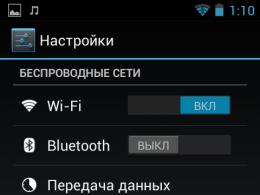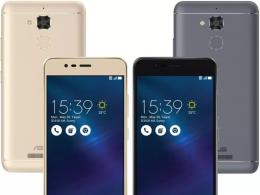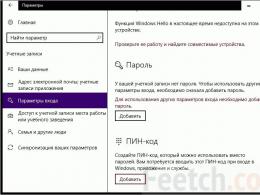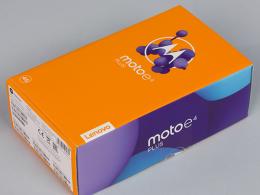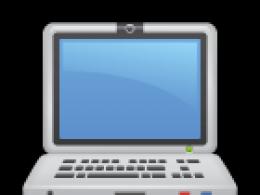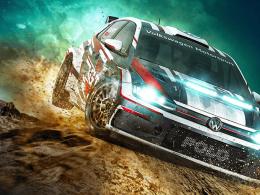Why can't the hard drive on my computer be read? The computer does not see the hard drive - what is the reason? Problems with software and system settings
People who use removable storage devices sometimes encounter situations where the computer (PC) does not see the hard drive (HDD). Disks, such as Transcend, Western digital, Seagate, Samsung, Ide, are gaining increasing popularity and demand among people of different ages and are used for personal purposes, in study and work. Their main purpose is the storage and exchange of information between people, and thanks to its minimal size, almost comparable to the parameters of a mobile phone, it can be easily stored among personal belongings taken with you, accommodating thousands of gigabytes.
It’s worth saying right away that cases when the computer does not see the hard drive occur quite often and turn out to be very unpleasant, especially when there is not much time. Let's try to understand the causes and possible solutions to this problem.
First of all, it is necessary to separate whether the disk is new or already previously used– this is essential in solution methods.
HDD hard drive on Windows 7, 8, 10
By a new hard drive, we mean, as is already clear, not its age, but the fact that it has never been written to and, accordingly, has not been connected to a computer or laptop.
- Click on the shortcut " My computer"right click and select " Control«.

- Find and click on “ Disk management", a window will open displaying the drives connected to the PC.

Drive letter value
A common cause of an error displaying a connected drive is the incorrect assignment of the drive letter, as a result of which the computer does not display it. Necessary detect the connected external hard drive HDD, detected by its name, size in MB (details are located at the bottom of the window) and distinguishable from the disk registered by the system, C, D, or other local disk marked when installing the operating system.
You can be sure that you have identified exactly the connected HDD: without closing the “Disk Management” window, unplug it and reconnect it to the computer; accordingly, it will disappear from the list and appear.
- Then right-click on it and select another sequential letter after those available in the system.

The disk is not formatted
Very often, connected hard drives are not visible on the computer due to the fact that they are new and have not been previously formatted. If you find them in the menu " Disk management“, changing the letter value will not work for such a disk, due to the lack of such a function. Here you need to select the value “ Create a simple volume«:
Please note that during volume creation, formatting will occur - along with the markup, the disk will be completely erased. As a result, the information stored there (if you are not sure exactly) will be completely deleted.

Lack of drivers
Another common reason that a hard drive connected to a PC is not visible is the lack of drivers for it. Despite the fact that the Windows system takes such cases into account and reacts, trying to select from the available ones or showing a window with the necessary search for drivers for the connected device. But still, failures occur and it may be that no information from the computer regarding this will appear.
- In this regard, you first need to make sure that the USB port to which you connected is working. This can be done by connecting something else that is accurately detected by the computer (for example, a flash drive).
- Then go to “ device Manager" (menu " Start" ->» Control Panel» -> « System and safety" or the key combination " Win+Pause Break" and select "Device Manager").

- Open tab " Disk devices«.

- « Other devices» and see if a device not recognized by the system is displayed with a yellow icon with an exclamation mark. If there is such a name or an undefined device (for example, the inscription “My passport”), right-click on it and select “ Update drivers«.
- You can search and update drivers in automatic mode, using special programs in the article (determining a suitable driver by hardware ID and a link to find it on the Internet).

- You can also try selecting the command “ Update system configuration" in the " tab Action". After which, the existing devices will be searched and the corresponding drivers will be installed.

The connected HDD is not visible previously used
If a disk that was previously used is not displayed, or, moreover, information is already stored on it, then you definitely need to make sure (if you don’t know for sure) that this hard drive is working by connecting it to another computer or laptop. The USB port to which the connection was made must also be in working order, and if you need to check it by connecting another device (flash drive) or check it by connecting the drive to another connector.
- If you are sure that the HDD along with the USB port is working, then you need to open the menu “ Disk management" (Pressing " My computer» right key and selecting « Control" and then press " Disk management") and look at the available disks and their affiliation with letter value (determined by name and size). If such a disk exists, then right-click on it and select “ Change drive letter", then the button " Change" and set the next letter after the drive letters already available on the computer.

- There are cases when such disks may contain viruses and prevent them from being displayed correctly in the system or be blocked by some antiviruses (low-cost free antiviruses can do this), as a result the hard disk is not visible on the computer.
You can solve this problem by reconnecting or by trying to find this drive in the “ Disk Management"(above) and also change the letter value, perhaps some message from the antivirus will appear (about the presence of viruses or its blocking or “access denied”) and decide to check for viruses or check for viruses on another computer. After that, reconnect to the computer - if the viruses were really present and were removed as a result of the scan, then now this hard drive should start without problems (unless, of course, it was blocked for this reason).
What to do if the computer does not see the external hard drive? Typically, such drives are easy to use because they are adapted for everyday use by the mass consumer. But there are situations when the HDD is not recognized after connecting to a computer with a Windows operating system or to another device with a USB port.
Most often, a computer or laptop does not see a removable hard drive due to a partition formatting error, the use of an incorrect file system, a broken USB port, or a lack of necessary drivers, but there may be other reasons. In the worst case, this may mean that the hard drive has failed. It should be noted that the operating principle of large external HDDs and pocket flash drives is identical, so the problems associated with them are usually solved in the same way. You can familiarize yourself with identical material on the invisibility of memory cards on various devices.
First of all, you need to find out why the external hard drive is not detected. To do this, you need to connect the external drive to the computer. If this is a full-fledged hard drive, then you need to turn on the power on it. Some heavy removable HDDs can even be connected to the mains using a separate cable. After connecting, you need to open the drive management tool. To do this, use the Windows + R key combination. In the line that appears, enter diskmgmt.msc and press Enter.
You should now see the external HDD in the list of all available drives. It will appear here even if Explorer on Windows XP does not recognize it due to missing partitions. If the external hard drive is detected, but does not open, then it needs to be formatted properly, after which it will be recognized by various devices. If the drive could not be detected even here, the reason may be something else.
What to do if the external hard drive is not detected? This may be caused by a hardware failure of the USB port, lack of a necessary driver, or failure of the drive. First of all, you need to try to run the disk through another free slot. If after this procedure the opened HDD works normally, then the reason was a broken USB port. It happens that the connectors on the front of the computer case have limited functionality and cannot ensure the normal operation of the external hard drive. It is recommended to use the rear USB ports.
Computer problems
Why doesn't my computer see my external drive? If the portable drive does not appear in the Disk Management Manager on Windows 7 even after connecting it to another connector, then it remains to find out whether everything is ok with the PC and the external drive. When the computer does not see the disk, but there is another PC at hand, then you need to try connecting the drive to it. In the case where accessible computers do not detect the external drive, we can conclude that it is broken and cannot be restored.
If Windows 10 does not see the drive, but it is recognized on other computers, then the operating system does not have the necessary drivers to detect it. You can probably find this out using the device manager on your computer. To open it, you need to call the command line using Windows + R, enter devmgmt.msc there and press Enter.
In the window that opens, the user must check all available drives for the presence of an icon in the form of a yellow exclamation mark. If such a picture is detected, then the problem lies in the drivers. You need to right-click on the device with the yellow sign, go to properties and read the message that reveals the essence of the error. If you copy this text verbatim into the Google search engine, then with a high degree of probability the results found will help solve the problem, because other users have probably already encountered such a problem.
System errors like these can be difficult to fix. If the computer stopped seeing the drive relatively recently, then you can run System Restore. In Device Manager, it is also recommended to try updating the driver or rolling it back to a previous version, as a result of which the HDD may begin to open. You also need to try to remove the device from the list in the hope that when you reconnect, Windows XP will be able to configure it correctly.
File system and formatting
Disk Manager can be used to fix problems related to partitions and the file system. If the visible disk in the image is full and there is unallocated space on it, then you need to create a new partition on it so that it can open. To do this, you need to right-click inside the unallocated space and create a new partition.
If the HDD is divided into sectors, but the computer no longer sees the external drive, then you need to make sure that it has received a designation in the form of a specific letter. The computer that sees the disk should do this automatically, but in some cases the user accidentally deletes a letter, which is why the disk cannot be detected. If a letter is missing, you need to enter it manually.
Why doesn't my PC see my external hard drive? There is always a chance that the drive is unreadable because it is using the wrong file system. The drive can be formatted using ext4 for Linux or HFS Plus for Mac. At the same time, Macbook does not see ext4, and Linux does not see HFS Plus. Even a tablet does not work with such file systems, so the drive will need to be reformatted using NTFS or the older FAT32 in case the computer does not see it. To do this, you need to right-click on the disk and select the appropriate system. Please note that this will delete all files on the drive. When your MacBook doesn't see your external hard drive, you need to format it using HFS Plus.
If the external HDD is no longer detected from another device, such as a disk player, smart TV, game console or multimedia center, then the reason may be in the NTFS file system. Many devices, including the Xbox 360, refuse to work with it. In this case, you need to remove and format the portable drive using the old FAT32 file system. Keep in mind that this process will delete files on the external drive, so you'll need to copy them somewhere first.
All of the above recommendations did not help solve the problem, and Windows does not see the HDD? In this case, we can conclude that the external hard drive has failed, cannot be restored, and information cannot be retrieved from it. Unfortunately, such equipment quite often breaks down a few years after intensive use, and this is quite normal. This video will help you understand in more detail the issue of why the computer does not see the external hard drive.
Greetings, dear readers.
Sometimes users encounter a situation where the computer cannot detect the hard drive. Moreover, this situation is accompanied by various symptoms. Today I will try to tell you why Windows does not see the hard drive under certain conditions.
Sometimes computer users encounter a situation where the device does not see the HDD when installing Windows. The problem is mostly due to a lack of the right drivers. This usually occurs when " Conductor"There is no desired partition, but the BIOS sees what it needs. There are several options for solving the disease:
After installation( )
Sometimes the memory may not be shown after installing the OS. Or as a result of connecting to a new computer. In this case, the first thing you need to check is the correct connection.
In addition, the second hard drive can often simply be turned off in the system to speed up work. To change the situation, you need to do a number of actions:

In the first case, right-click on the disk name. Select " Initialize" Specifying the structure GPT or MBR(not always). It is recommended to use the latter. At the end you will get the “Unallocated” area.
Then right-click on this segment again and select “ Create a simple volume».
We follow the wizard's instructions.
After this, the second hard drive should appear in Explorer. Sometimes the device needs to be rebooted.
The last option can be solved by right-clicking on the desired area and selecting “ Format" Sometimes assigning a letter can help.
In AHCI mode( )
The mechanism itself is designed for devices connected via the SATA protocol. It allows you to use additional functions that speed up your work.
Sometimes there are situations in which the device is in AHCI simply not defined. In this case, if you turn it off, everything starts to function normally.
There is a solution to the problem, although it may be somewhat painful for many users. To do this, we need an installation disk with Windows 10 or other latest versions of Microsoft OS. So, we need to do a number of actions:

External device( )
Many users come across a situation where their system for some reason does not accept an external hard drive. As usual, this can be for various reasons.
For example, often a HDD-USB just purchased from a store may simply not be formatted. The solution is simple - using built-in or third-party utilities, we produce everything necessary.
In addition, drivers can also become a problem. You can find this out simply - try connecting the equipment to other units. If everything is fine on them, then the solution is simple:

To do this, right-click on the element and select the desired line. If the system cannot automatically find what it needs, we go to the official website of the removable device or motherboard. We find suitable software and install it.
In addition, you can use a special program that automatically finds and installs everything you need. I have already mentioned it more than once and talked about it in previous articles.
Another, albeit drastic, but effective method is to reinstall Windows.
Moreover, it is worth noting that it is better to find a clean image, without any additions. This often helps when using components with large amounts of memory, for example, 3 Terabytes.
MacOS( )
I would like to separately tell you that similar problems often arise among users who, in addition to Windows, also use Mac OS. The fact is that the latest operating system supports interaction with different hard drive manufacturers. But at the same time, for constant stable operation you need to use only certain ones. And unfortunately, it is not yet possible to solve this situation differently.
When buying a computer, few users ask themselves how much hard drive capacity they need; they cannot predict in advance which files and how large they will be stored on the computer. Over time, the PC turns into a “file dump”. It’s a shame to delete everything, but in reality there’s not much that’s needed. However, during work or for certain needs, additional amounts of disk space are needed, which can be expanded by connecting an additional HDD or SSD drive.
Why do you need a second hard drive?
Often users want to separate the operating system, programs and user personal files. In addition, installing the system and programs on a separate fast (albeit not so capacious) SSD disk or HDD can significantly speed up system loading, improve responsiveness and increase productivity. Saving time is a significant factor.
How to connect an additional disk drive?
Any computer, even an ancient one, has the ability to connect several disks at the same time. All modern computers support the installation of drives with SATA1, SATA2, SATA3 interfaces. If your motherboard has a SATA2 interface, and the hard drive meets SATA3 specifications, then connection is possible (compatibility in connectors and signals), but the maximum performance of the drive will be limited by the motherboard interface, that is, the data exchange speed will not be higher than in SATA2.

To install an additional hard drive, you need to connect 2 connectors - power and data. All operations must be carried out with the power completely turned off. After installing the second disk and starting the computer, the new disk will be initialized, and then it will need to be formatted and partitioned (or left 1 partition). However, the additional hard drive does not always start working. Why?
Why doesn't the computer see the second hard drive?
There may be several reasons for this phenomenon. These are software or hardware failures, lack of drivers, outdated operating system, incorrect connection and setting of HDD operating parameters.
The old computer does not see the second hard drive.
For older computers where the connection is via the IDE interface, all disk drives have jumpers to set the disk operating mode - Master (main, primary master), Slave (secondary, additional, slave). In this case, for the first one (for the old disk from which the operating system boots), you need to set the jumper to Master mode, and for the new one - to Slave mode. If 2 drives are connected with one data cable, then the Master drive should be closer to the motherboard (by connector) than the new drive.
The new computer does not see the SSD
For modern computers with SATA interfaces, the new drive may not be visible in cases where you connect an SSD drive. SSDs have built-in controllers that are not always compatible with the controllers installed on the motherboard. If the disk is not detected, you can connect it to another SATA connector on the motherboard (if it has several different controllers). Also, the new HDD may not be visible due to the incorrectly set operating mode of the hard drive controller. This mode is configured in the BIOS menu of the motherboard. For each BIOS manufacturer and motherboard model, the available operating modes and their names may differ.


The computer does not see the new HDD. How to fix?
To correct the situation when the computer does not see the second hard drive, you should check the BIOS settings, connect the drive to a different data connector and power connector. If this does not help, then other methods will come in handy.
Most often, all equipment is in good working order and correctly configured, there are just a few points that you should not forget about. The new hard drive may not have a letter assigned or may not be formatted. The computer sees the disk at the stage of testing and loading to the operating system (white letters on a black background when the PC is turned on), but there is no new disk in Windows Explorer. This happens often. In a Windows system it is very easy to fix even without using additional programs.
We format the new disk and assign it a letter - Windows 7
We go to START. Right-click on “My Computer” and select the “Manage” context menu item.

Next, go to the Disk Management section. A list of drives connected to the computer will be displayed. Each drive will be displayed by partition with corresponding letters. If the disk is new, then there is a 99% chance that it is simply not formatted.


After successful completion of the operation, the option to create a partition on a new disk will be available.

This operation can also be performed using specialized software tools for working with HDDs and SSDs - Acronis Disk Director, Paragon Partition Manager and others.
In most cases, the above information will help solve the problem of the computer not recognizing the new hard drive. If this does not help, the best solution would be to contact a specialist who will find out and eliminate the cause.
| How do you like it? - |
Good afternoon.
External hard drives (HDDs) are becoming more popular day by day, sometimes it seems that very soon they will be more popular than flash drives. And it’s not surprising, because modern models are some kind of box, the size of a cell phone and contain 1-2 TB of information!
Many users are faced with the fact that the computer does not see the external hard drive. Most often, this happens immediately after purchasing a new device. Let's try to figure out in order what's going on here...
If the new external HDD is not visible
Here, new means the disk that you connected to your computer (laptop) for the first time.
1) First what are you doing - go to computer control .
To do this, go to control Panel , then in system and security settings -> administration -> computer control . See screenshots below.
2) Please note to the column on the left. It has a menu - disk management . Let's move on.
All drives (including external ones) connected to the system should be displayed in front of you. Very often, the computer does not see the connected external hard drive due to the incorrect drive letter assignment. That's what you need to change!
To do this, right-click on the external drive and select “ change drive letter... ". Next, assign the one that is not yet in your OS.
3) If the disk is new, and you connected it to your computer for the first time - it may not be formatted! Therefore, it will not appear in “my computer”.
If this is the case, then you will not be able to change the letter (you simply will not have such a menu). You just need to right click on the external drive and select " create a simple volume... «.
Attention! During this process, all data on the disk (HDD) will be deleted! Be careful.
4) Lack of drivers... (Update from 04/05/2015)
If the external hard drive is new and you don’t see it in “my computer” or “ disk management“, and it works on other devices (for example, a TV or another laptop sees and detects it) - then 99% of the problems are related to the Windows OS and drivers.
Despite the fact that modern Windows 7, 8 operating systems are quite “smart” and when a new device is detected, they automatically search for a driver for it - this does not always happen... The fact is that the Windows 7, 8 OS versions (including all kinds of assemblies from " there are a huge number of craftsmen), and various mistakes have not been canceled. Therefore, I don’t recommend excluding this option right away...
1. Check the USB port to see if it is working. For example, connect a phone or camera, even just a regular flash drive. If the device works, then the USB port has nothing to do with it...
2. Go to Device Manager (In Windows 7/8: Control Panel/System and Security/Device Manager) and look at two tabs: Other devices And disk devices.
Windows 7: Device Manager reports that there are no drivers for the “My Passport ULTRA WD” disk in the system.
The screenshot above shows that Windows does not have drivers for an external hard drive, so the computer does not see it. Usually, Windows 7, 8, when you connect a new device, automatically installs a driver for it. If this does not happen for you, you have three options:
a) Click the “Update hardware configuration” command in the device manager. Usually this is followed by automatic installation of drivers.
b) Search for drivers using special. programs: ;
c) Reinstall Windows (to install, select a “clean” licensed system, without any assemblies).
Windows 7 - Device Manager: drivers for the external HDD Samsung M3 Portable are installed correctly.
If you can't see your old external hard drive
Old here refers to a hard drive that previously worked on your computer and then stopped working.
1. First, go to the disk management menu (see above) and change the drive letter. This is definitely worth doing if you have created new partitions on your hard drive.
2. Secondly, check the external HDD for viruses. Many viruses disable the ability to see disks or block them ().
3. Go to Device Manager and see if the devices are detected correctly. There should be no yellow exclamation marks (or red ones) that indicate errors. It is also recommended to reinstall the drivers for the USB controller.
 4. Sometimes reinstalling Windows OS helps. Anyway, first, check the functionality of the hard drive on another computer/laptop/netbook, and then try reinstalling.
4. Sometimes reinstalling Windows OS helps. Anyway, first, check the functionality of the hard drive on another computer/laptop/netbook, and then try reinstalling.
It’s also useful to try cleaning your computer from unnecessary junk files and optimizing the registry and programs (here’s an article with all the utilities: use a couple...).
5. Try connecting the external HDD to a different USB port. It happened that for unknown reasons, after connecting to another port, the disk worked perfectly as if nothing had happened. I noticed this several times on Acer laptops.
6. Check the cords.
One time the external hard drive didn't work because the cord was damaged. I didn’t notice it from the very beginning and spent 5-10 minutes looking for the cause...

